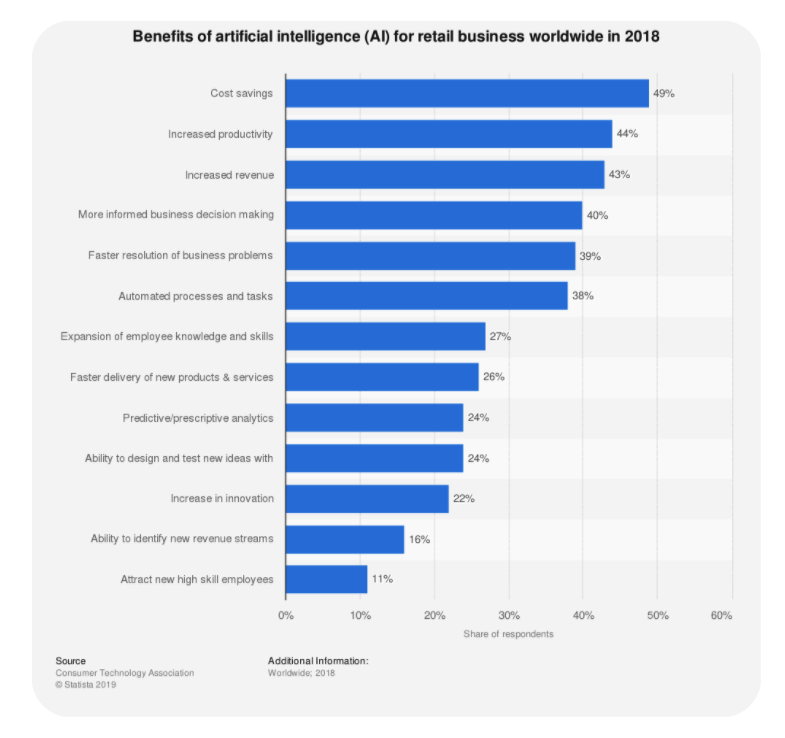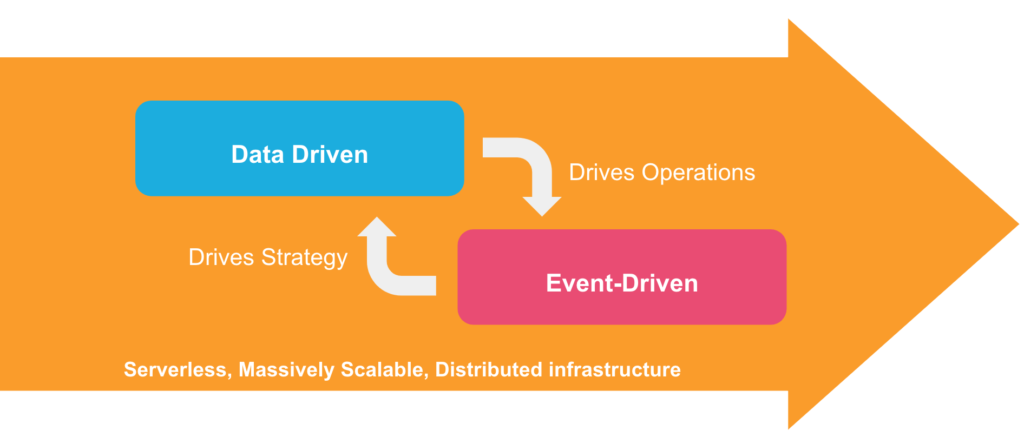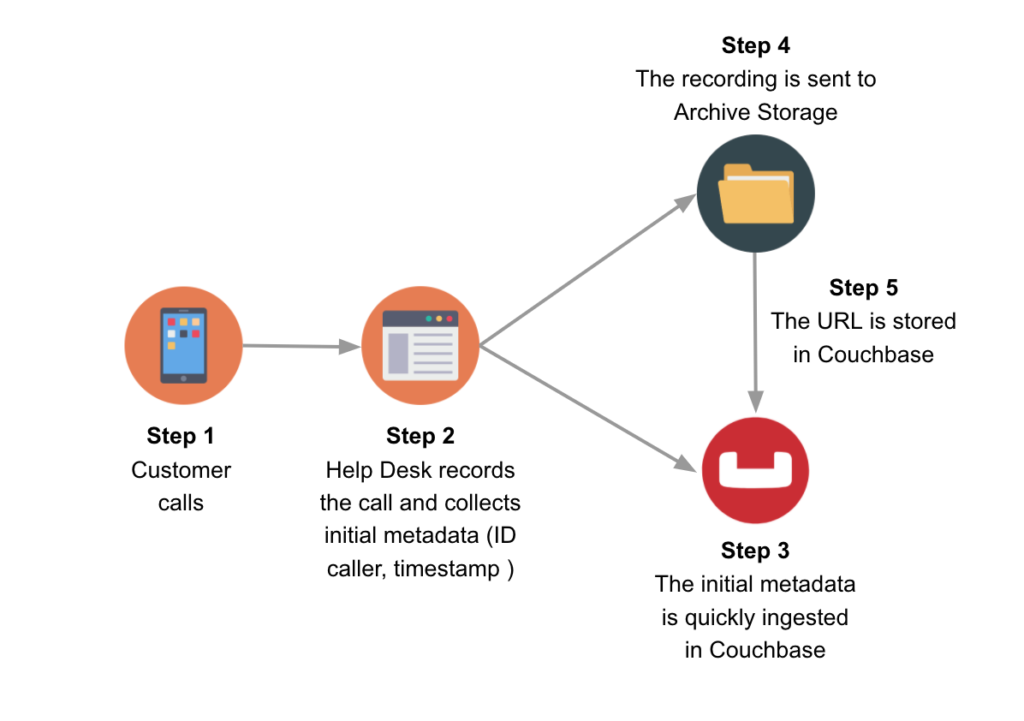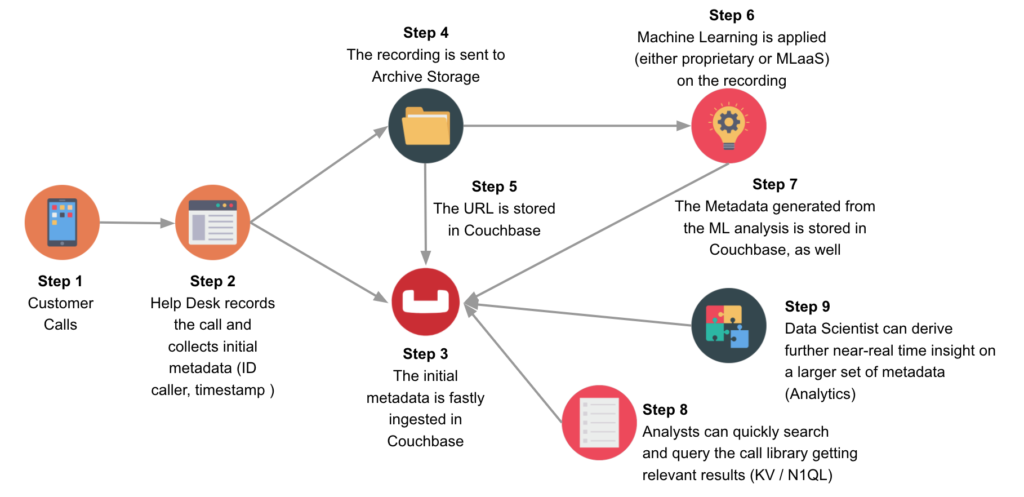Chris Galy, Chief People Officer at Couchbase, explained in an article you can find with a quick Google search that our mission is about channeling our passion to solve hard problems so our customers can innovate and change the world.
It all sounds pretty exciting, doesn’t it? But what is innovation today? This is the kind of question one can ask 20 different people only to get 20 different answers.
Gartner comes to our rescue, with their yearly report about the top strategic technology trends, a pretty accurate picture coming straight from industry leaders. For this article, I read through the reports spanning from 2018 to 2021, and while I will not dive into the details, I identified four driving forces:
- Automation and augmentation of daily operations
- Hybrid cloud operations and global integration
- Autonomous decision-making
- Drive Customer Behavior
It’s fair to say that AI and machine learning can play a major role in supporting at least three of these four areas. So let’s talk about the AI opportunity.
The AI Opportunity
Let’s start with some numbers provided by McKinsey; in their study “Modelling the impact of AI on the world economy”, they estimate that AI will deliver 13 trillion dollars in additional economic output by 2030 the global GDP by 1.2% a year.
If these numbers don’t scare you enough, just consider how this means there are 13 potential companies the size of Amazon or Google that are yet to be created.
In 2018, the Consumer Technology Association ran a study about the benefits realized by Artificial Intelligence in retail businesses worldwide; the top 3 benefits identified by the interviewees were:
- cost savings
- increased productivity
- increased revenue

You may want to check in with your friend with a background in economy and business (we all do have one) to confirm how these benefits are directly affecting the critical drivers for profit.
In other terms, AI drives profit.
This should be enough for any CTO in the world to kickstart AI-driven initiatives, but then why is there a common feeling about the state of AI not living up to the hype?
Andrew NG, a co-founder of Coursera, Deeplearning.ai, professor at Stanford, and former director of AI lab shared his thoughts on this matter in a letter to the Harvard Business Review. He identified eight key reasons that are keeping companies from adopting advanced analytics:
- Skills
- Picking the Right Projects
- CEO buy-in
- AI workflows and processes
- IT Infrastructures
- Regulation
- Data-driven Culture
- Fear of becoming redundant
For the scope of today’s article, and to be considerate of the readers’ time, I will address three of these components: projects, fear, and architecture.
Picking the right projects
How to get started? Like many things in life, getting started is usually the most challenging step. Forbes shared a study comparing the effectiveness of machine learning against classic analytics, and showed four main use cases where AI will outperform classic BI:
- Proactive identification of attacks
- Proactive Customer segmentation
- Spending patterns prediction
- Drive Customer’s experience and behavior
As I hope you will appreciate, these use cases are pretty much applicable across desperate business verticals – so regardless of your industry, there is an opportunity in exploring AI.
Fear of becoming redundant
The second blocker I am going to address is fear. Fear of change, fear of becoming redundant, fear of disruption. I will borrow some words of wisdom from Ben Pring, Head of thought leadership at Cognizant and author of the book “What to do when machines do everything”.
 Mr. Pring walks us through what typically happens when one invention gives rise to unforeseen innovation, by introducing us to the so-called Budding effect: Edwin budding is the inventor of the lawnmower. When he patented his invention in 1830, he would probably have never imagined how the lawnmower would serve as a defining moment for the sports industry.
Mr. Pring walks us through what typically happens when one invention gives rise to unforeseen innovation, by introducing us to the so-called Budding effect: Edwin budding is the inventor of the lawnmower. When he patented his invention in 1830, he would probably have never imagined how the lawnmower would serve as a defining moment for the sports industry.
Before the lawnmower, there were no rugby fields, no soccer pitches, no tennis courts: the modern sports industry was somehow born with Budding.
More in general, the Budding Effects states that innovation creates disruption, or a vacuum if you will, that brings opportunity for those willing to fill that void or address new needs. It’s not a finish line, it’s a new start over and over again.
Ben Pring identifies AI as the underlying fuel of the Fourth Industrial Revolution, and in doing so he predicts that some jobs will probably disappear, as it always happened in any Industrial Revolution, but the overall amount of wealth will increase for most people. Jobs with transform and humans will be able to focus more on what makes them special: intuition and creativity.
In other terms, one can think that AI will give rise to a new, digital, Renaissance. What an exciting time to be alive!
IT architectures
Before getting started, it was important to sketch a plan and to address t our concerns. Now let’s get into the tools we are going to need.
As pictured in the diagram below, the rise of Event-Driven architectures eventually allowed us to create a feedback mechanism for the continual improvement of digital services by combining data and event-driven decisions.

- Data-driven decisions are key drive daily operations of services
- Event-driven decisions, on the other, provide insight into uncharted opportunities, therefore driving strategy
Organizations willing to lead the Fourth Industrial Revolution will require IT platforms capable of providing both data and event-driven information ready to adapt to today’s fast-paced customer demands, leveraging massive elastic scalability provided by serverless, distributed architectures.
Guess what? Couchbase provides all these features, and much more!
A practical framework for AI deployment using Couchbase
How all of this can come together in real life, you might ask. Well, our website provides several Customer Success Stories, including the amazing work done by Seenit that I recommend checking out here.
Nevertheless, I will walk you through a common use case that came up many times recently, about using Couchbase and AI to improve Customer Segmentation and Experience (remember the four driving forces we talked about?).
Let’s assume to have a typical service desk application running on Couchbase. In a “traditional”, pre-AI approach, the high-level diagram of its implementation will probably look like this:

The asynchronous workflow would be the following:
- The Customer places a call
- The Help Desk Agent manages the call, collecting some metadata (ID caller, notes, etc..)
- As the call is over, the Help Desk agents notes are stored into Couchbase
- The recording of the call is placed into a dedicated coldline storage solution
- The URL of the recording is written back to Couchbase, into the related document
This approach works well because it allows taking advantage of Couchbase’s ability to store data asynchronously, in an unstructured format, at a crazy speed and volume. In a traditional BI approach, thanks to Multi Dimensional Scaling (MDS) you could later be using N1QL queries, Full-Text Search, or Analytics on top of your Couchbase Cluster without affecting the operational state of your Help Desk application.
How about AI? I am glad you asked, let’s expand our workflow a little bit – see diagram below; the new workflow builds over the traditional implementation, adding the ability to run machine learning and AI models to mine the actual conversation, benchmark it, and unlock superhuman insight.

The updated asynchronous workflow would be the following:
- The Customer places a call
- The Help Desk Agent manages the call, collecting some metadata (ID caller, notes, etc..)
- As the call is over, the Help Desk agents notes are stored into Couchbase
- The recording of the call is placed into a dedicated coldline storage solution
- The URL of the recording is written back to Couchbase, into the related document
- A Machine Learning algorithm is run over the recording – either through MLaaS or a proprietary model, either mining the recording itself (preferred, as it allows to capture nuances in the conversation) or a transcript; also, bear in mind that:
- Different models can be run for different purposes – multi-model strategy
- Different models can be combined to improve results – blender strategy
- The metadata generated by the model is stored in the related Couchbase document
- Analysts can then run N1QL queries, Full-Text Search, Analytics, or even create Eventing triggers built upon the enriched dataset
- Data Scientists can derive improved insights about the effectiveness of prediction models, and act upon them;
This approach relies on the advantage of orchestration over isolation, that is using as many specialized tools as needed to get the job done, rather than forcing a one-tool-for-everything approach that typically leads to forcing a solution to perform a job it is not designed for.
Also, please notice how I decided to run prediction models in a reactive approach (on the call’s recording) whilst it would be possible to run them proactively (that is, in real-time); for the sake of this article, I chose to keep things as simple as possible, aiming at talking to an audience willing to start their journey into AI-driven analytics.
Call to action: create disruption!
While I hope you enjoyed this reading, here are a few more resources to get you started:
- Identify the right use case: this can be as simple as expanding an existing use case for which you are already taking advantage of Couchbase; reach out to your Sales Engineer to start a conversation, or check out our Customer Case Studies;
- Machine Learning skills can be pretty hard (and expensive!) to find; however, many cloud providers provide democratized MLaaS solutions that will allow you to get started on a budget:
- Google’s AI platform and AutoML features
- Comparison between AWS, GCP, and IBM offerings – click here
- As an alternative to MLaaS, leverage Splunk – as we explained in our blog post
If you have any questions, please feel free to reach out to us at info@couchbase.com